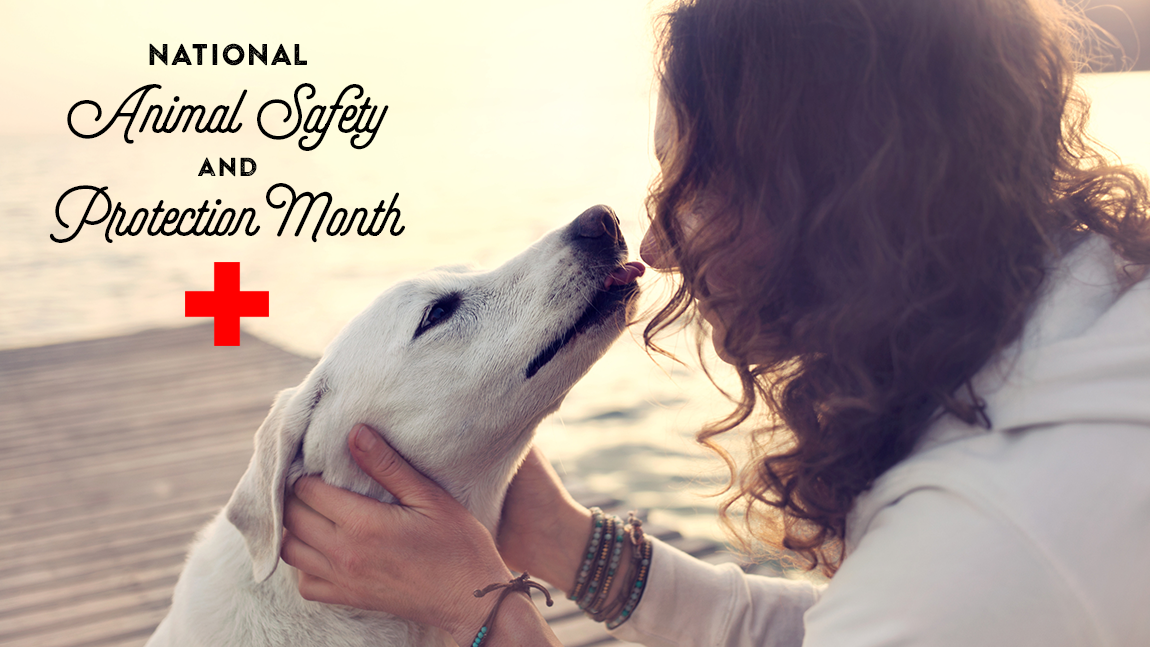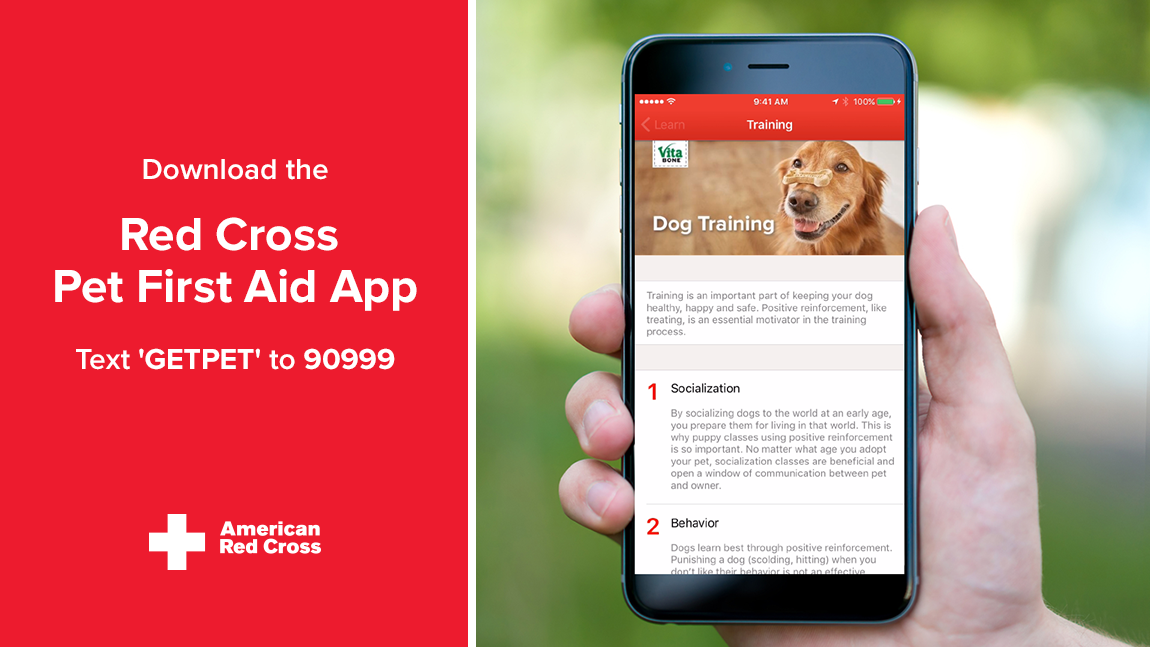This month (and every month) is a time to recognize safety measures you should take to protect your dog and ensure he’s healthy. We’ve teamed up with the American Red Cross to build a free Pet First Aid App, which you can learn about here and download here. Below are some basic pet safety tips that you should always keep in mind. If our dogs could tell us what hurts, it would be a different story; so it’s crucial to understand what behavior and signs suggest that your dog may not be feeling 100% and what is normal. Breathing rate, dehydration and temperature are all things we can keep an eye out for.
Watch your dog and count the number of times his chest rises and falls in one minute. Normal breathing rates (not breed/size specific) are 10-30 breaths per minute and up to 200 pants (breathing with mouth open and tongue out) per minute. To tell if your dog is dehydrated, pull on on the skin between the shoulder blades. Your dog’s skin should spring right back. If it stays tented, this may be a sign of dehydration. To take your dog’s temperature, use a digital thermometer. Lubricate the thermometer with a water-based lubricant or petroleum jelly. Insert the tip into the rectum (just beneath the tail.) When the thermometer beeps, remove it and read the number. Their temperature should read between 99.5-102.5 degrees Farenheit.
Just like humans, dogs also can have allergic reactions to different things. These reactions may include hives, redness, itching and licking at the site, swelling around the eyes, vomiting, difficulty breathing and collapsing. A severe reaction can also lead to anaphylactic shock which could occur immediately or progressively over several hours. If your dog has been stung by something, do not attempt to pick a stinger out- that may release more toxin. It’s always important to call your veterinarian if your dog is having a severe allergic reaction.
To learn more about First Aid tips for your pets, be sure to download the FREE Pet First Aid app here or you can also text “GETPET” to 90999.


